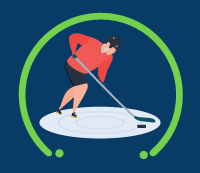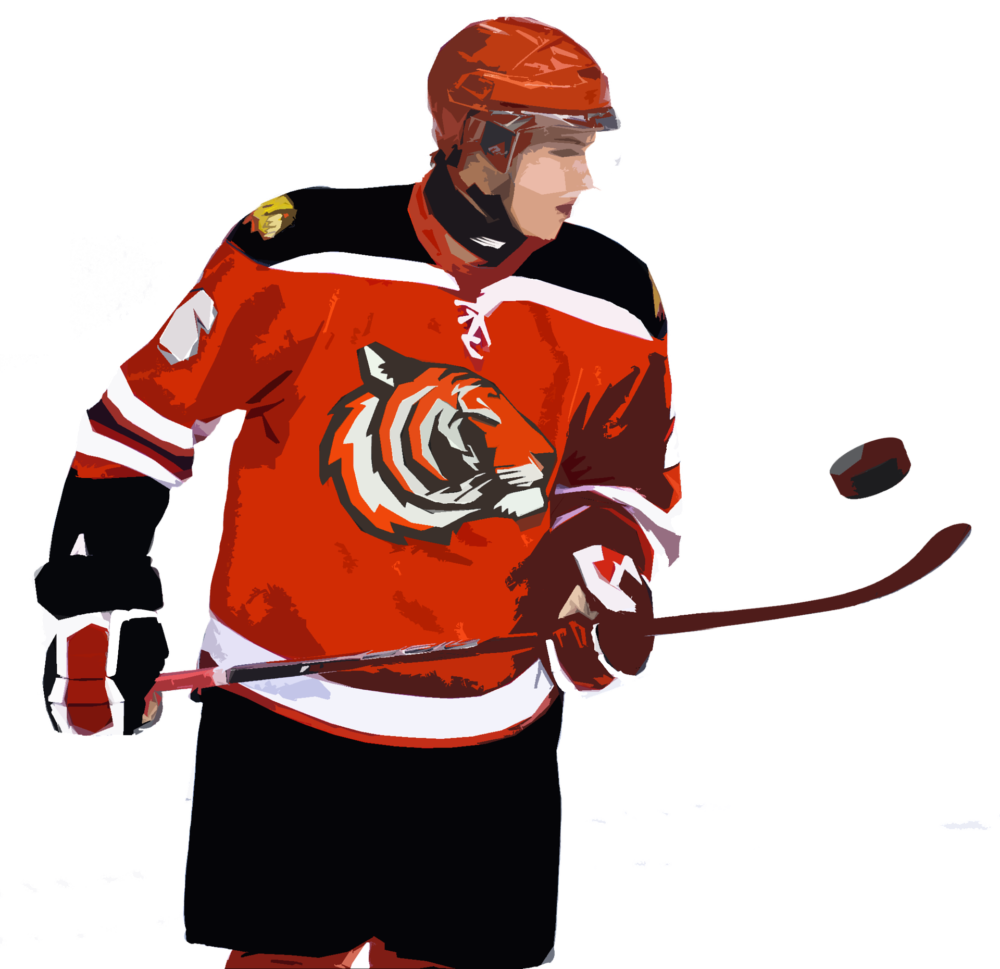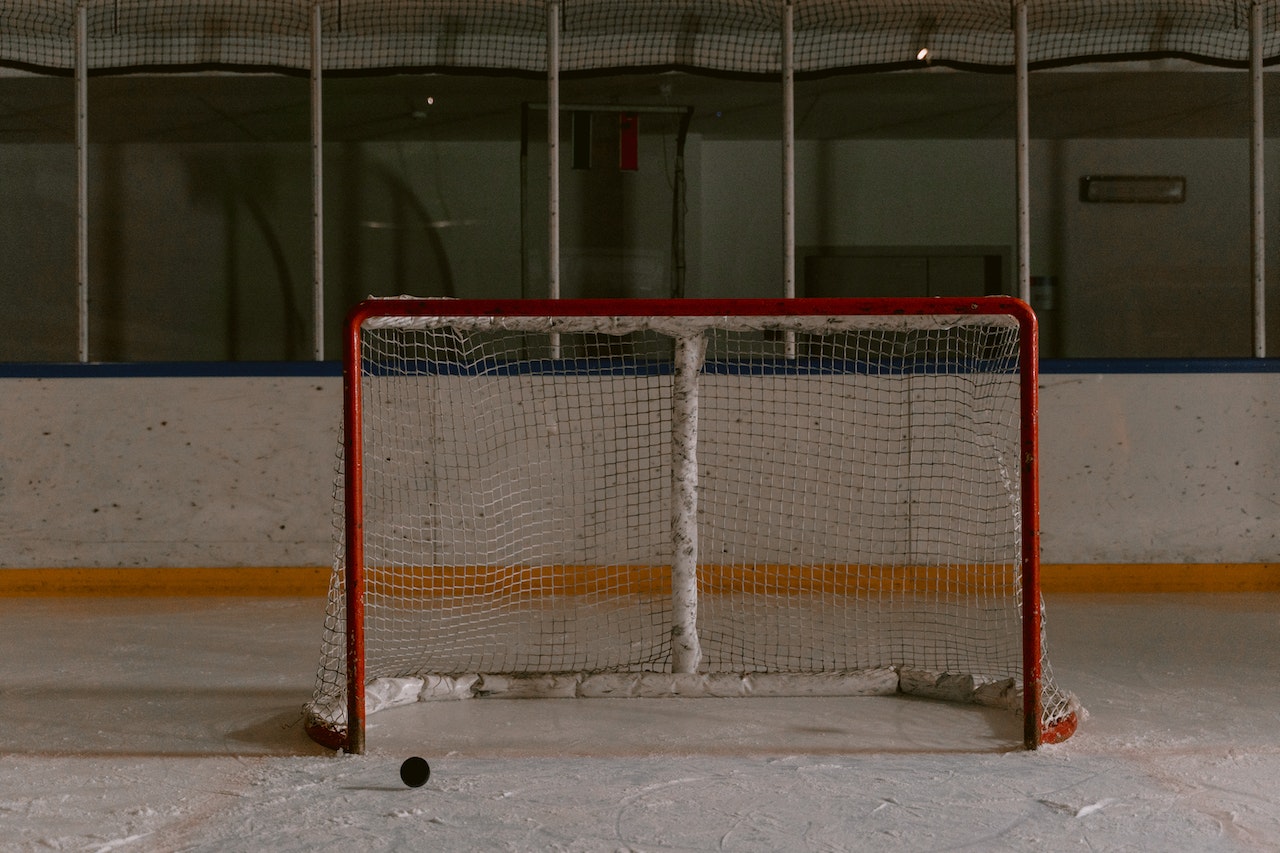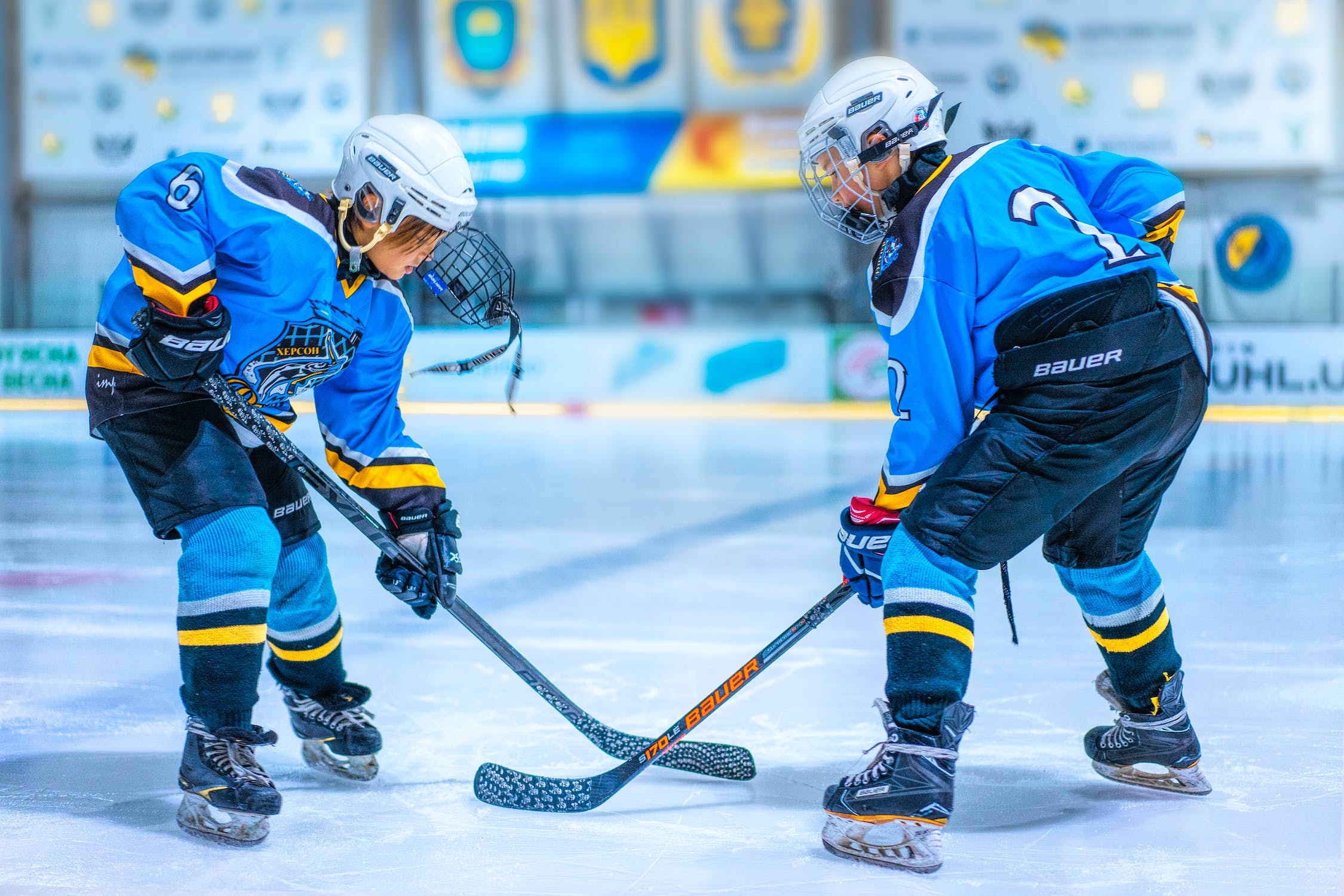If you want to learn all the ice hockey skills, you will require hard work, focus, dedication, and practice. All the necessary skills take time to develop, but consistent training and a commitment to improve yourself, help you in becoming a skilled hockey player. Let’s read and understand some of the essential skills needed to become a pro hockey player.
Skating Skills
Skating is the foundation of ice hockey, and without this, you won’t be able to play the game effectively. Following are the key skating skills that are essential for ice hockey:
- Balance and Edge Control
- Forward Skating
- Backward Skating
- Crossovers
- Stops and Starts

Balance and Edge Control
Balance is the most fundamental skating skill, and it involves maintaining a stable and centered position on your skates. Edge control is the ability to shift your weight from one skate to the other, which is necessary for changing direction and making turns.
Forward Skating
Forward skating is the most basic skating skill in ice hockey. It involves pushing off with one skate and gliding on the other. Players are needed to skate forwards with speed and agility to be more effective in the game.
Backward Skating
Backward skating is another essential skating skill for ice hockey. It involves pushing off with one skate and gliding backward on the other. Players need to be able to skate backward with speed and agility to defend against opponents and make quick transitions.
Crossovers
Crossovers are a skating maneuver that involves crossing one skate over the other while skating forward or backward. Crossovers are essential for changing directions quickly and efficiently.
Stops and Starts
Stopping and starting are important skating skills for ice hockey. Players need to be able to stop quickly to change directions or avoid collisions. Starting quickly is essential for gaining speed and making fast breaks down the ice.
For more clarity, take a look at below table. This table contains a list of essential skating skills for hockey players, including definitions, importance, and ice hockey skating drills to practice.
Skating Skills in Hockey
| Skating Skill | Definition | Importance | Drills |
|---|---|---|---|
| Forward Skating | Moving forward on the ice using a stride or crossover step. | Essential for skating up the ice, generating speed, and creating scoring opportunities. | Circle drills, power skating drills, and cone drills. |
| Backward Skating | Moving backward on the ice using a backward stride. | Important for defending and transitioning from offense to defense. | Backward crossovers, backward skating drills, and pivot drills. |
| Edge Control | The ability to skate on the inside and outside edges of the blades for better maneuverability. | Essential for changing direction quickly and making tight turns. | Edge control drills, figure eight drills, and cone drills. |
| Quick Starts | The ability to accelerate quickly from a stationary position. | Important for winning races to the puck and creating breakaway opportunities. | Sprint starts, explosive starts, and reaction time drills. |
| Tight Turns | The ability to make quick, tight turns at high speeds. | Important for evading defenders and changing direction quickly. | Tight turn drills, figure skating drills, and cone drills. |
| Pivoting | The ability to change direction quickly by pivoting on one foot. | Essential for transitioning from offense to defense and defending in tight spaces. | Pivot drills, backward pivots, and agility ladder drills. |
Stick Handling Skills
Stick handling skills refer to the abilities that ice hockey players need to control the puck with their sticks while skating on the ice. These skills involve various techniques and movements, such as dribbling, deking, puck protection, and quick release, among others. Strong stick handling skills are essential for players to maintain possession of the puck, create scoring opportunities, and avoid turnovers.
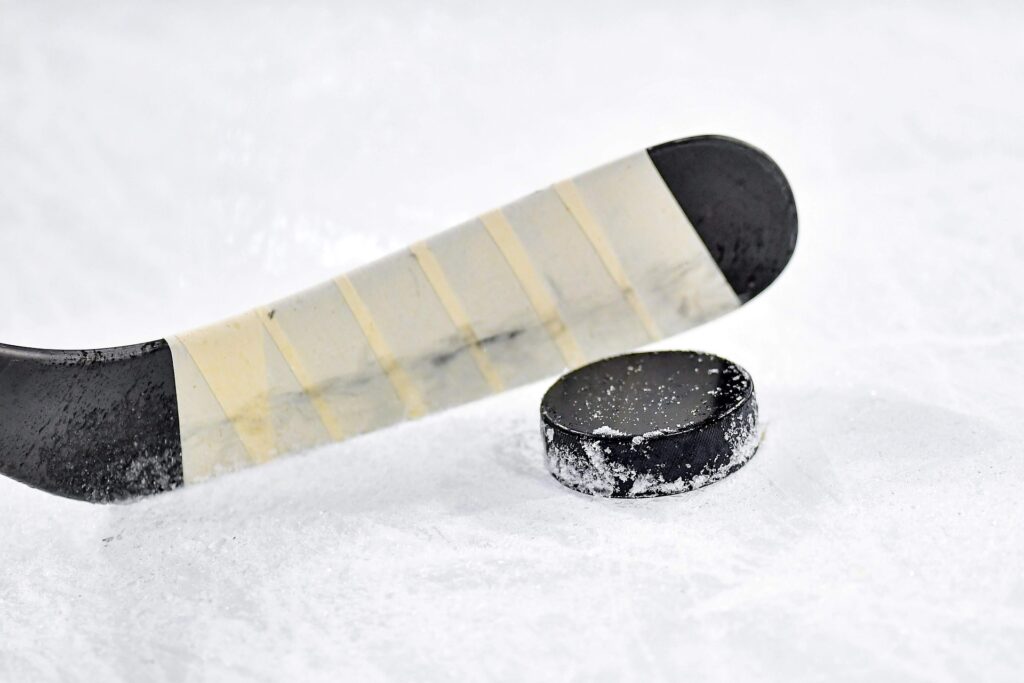
I’ve shared a table below which provides a comprehensive list of stick handling skills in ice hockey, including definitions, tips, and drills to help players improve their stick handling abilities on the ice.
Stick Handling Skills in Ice Hockey
| Stick Handling Skill | Definition | Tips | Drills |
|---|---|---|---|
| Dribbling | Keeping control of the puck while skating | Keep your head up, use small, quick movements with the stick | Dribbling progressions, obstacle courses, cone drills |
| Toe Drag | Moving the puck with the toe of the stick blade | Use a quick, smooth motion to pull the puck back with the toe of the blade | Toe drag progressions, stickhandling through obstacles, one-on-one drills |
| Deke | Faking out an opponent to gain an advantage | Use your body and stick to fake out the defender, keep your eyes up | Deke progressions, one-on-one drills, offensive zone drills |
| Puck Protection | Shielding the puck from defenders | Keep your body between the puck and the defender, use your body and stick to maintain possession | Puck protection progressions, one-on-one drills, battle drills |
| Fakes | Using fake movements to confuse defenders | Use quick, deceptive movements with the stick to fake out the defender | Fake progressions, one-on-one drills, offensive zone drills |
| Quick Release | Releasing the puck quickly to catch the goalie off guard | Keep the puck close to your body, use a quick release with the stick | Quick release progressions, shooting drills, offensive zone drills |
| Receiving Passes | Successfully accepting passes from teammates | Keep your stick on the ice, receive the pass on the blade of the stick | Receiving pass progressions, passing accuracy drills, one-on-one drills |
| Backhand Control | Maintaining control of the puck with the backhand side of the blade | Keep your wrist firm, use small, quick movements with the stick | Backhand control progressions, stickhandling through obstacles, one-on-one drills |
| Tight Turns | Making sharp turns while maintaining control of the puck | Keep your head up, use your body and stick to make tight turns | Tight turn progressions, obstacle courses, cone drills |
| One-Handed Control | Maintaining control of the puck with one hand on the stick | Use quick, controlled movements with the stick, keep your balance | One-handed control progressions, stickhandling through obstacles, one-on-one drills |
Shooting Skills
Shooting is another critical skill for ice hockey. Most of the times winning and losing a game is dependent on a good shot as it make a lot of difference. Here are some of the shooting skills (shots) that every ice hockey player should master:
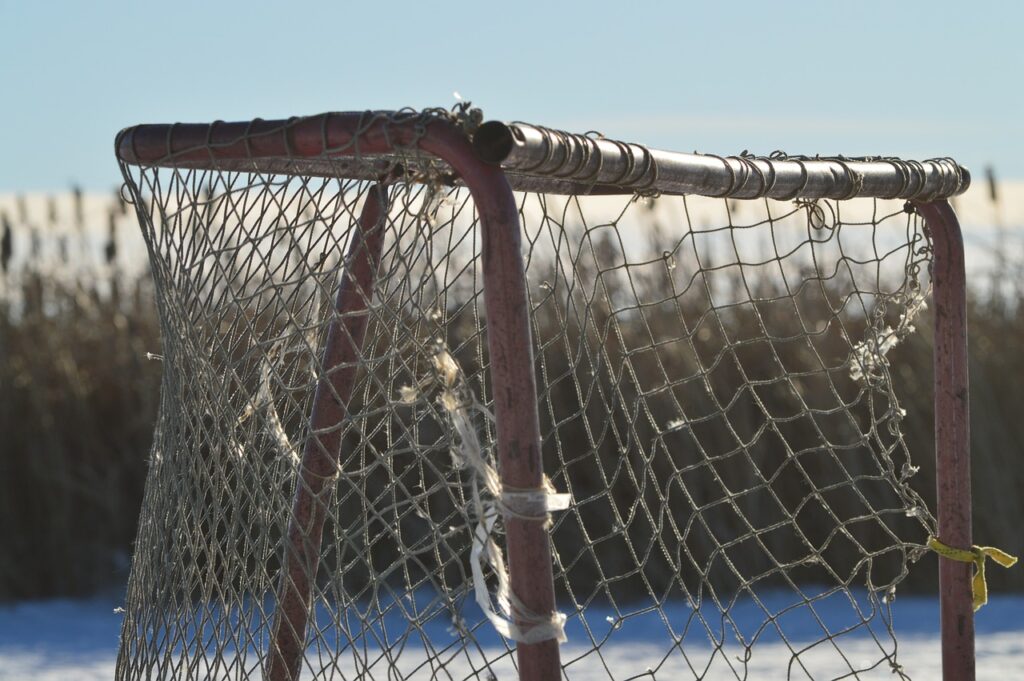
Wrist Shot
The wrist shot is the most basic shot in ice hockey. It involves shooting the puck with a quick snap of the wrist, using the top hand to guide the puck.
Slap Shot
The slap shot is a more powerful shot that involves winding up and hitting the puck with a full swing of the stick. It requires good timing, balance, and follow-through.
Snap Shot
The snap shot is a quick, low-release shot that requires less windup than the slap shot. It is a versatile shot used in many situations during the game.
Backhand Shot
This is more difficult shot in which players have to shoot the puck while facing away from the net. It is a useful tool for surprising the goaltender and scoring goals.
A comprehensive table outlining key shooting skills in hockey, including definitions, tips, and drills to help players improve their offensive capabilities and become more effective scorers on the ice.
Essential Hockey Shooting Skills
| Shooting Skill | Definition | Tips | Drills |
|---|---|---|---|
| Wrist Shot | Quick, low shot with a flick of the wrist | Keep eyes on target, transfer weight to front foot | Wrist shot progressions, shooting in stride, one-timers |
| Snap Shot | Quick, low shot with quick release | Load stick, follow through towards target | Snap shot progressions, shooting off the pass, accuracy drills |
| Slap Shot | Powerful, high shot with windup and follow-through | Keep knees bent, transfer weight from back foot to front foot | Slap shot progressions, shooting off the boards, power drills |
| Backhand Shot | Shot taken with backhand side of stick | Keep blade closed, follow through towards target | Backhand shot progressions, shooting off the backhand pass, quick release drills |
| One-timers | Shot taken off a pass without stopping the puck | Get into position early, focus on timing and accuracy | One-timer progressions, shooting off the pass, redirection drills |
| Deke Shots | Fake a shot and then shoot | Keep puck in shooting position after the fake, shoot quickly | Deke shot progressions, fake shots, shooting in stride |
| Rebound Shots | Shot taken off a rebound from a save | Follow the puck to the net, shoot quickly | Rebound shot progressions, net-front presence drills |
| Wraparound Shots | Shot taken while skating around the net | Protect the puck, shoot quickly while close to the post | Wraparound shot progressions, close-range shooting drills |
| Deflection Shots | Shot redirected by a stick or body | Get into position for the deflection, direct the puck towards the net | Deflection shot progressions, redirecting drills |
Passing Skills
Passing is an essential skill in ice hockey. It involves moving the puck from one to another and is important for setting up scoring opportunities. Here are some of the passing skills that every ice hockey player should master:
Forehand Pass
The forehand pass is the most basic pass in ice hockey. It involves pushing the puck with the blade of the stick while facing the target.
Backhand Pass
The backhand pass is a more difficult pass that requires players to pass the puck while facing away from the target. It is useful for surprising opponents and creating scoring opportunities.
Saucer Pass
The saucer pass is a pass that is lifted off the ice, allowing the puck to float over sticks and skates. It is a useful tool for making passes through traffic.
One-Touch Pass
The one-touch pass is a pass that is received and passed in one motion, without stopping the puck. It requires good timing and hand-eye coordination.
Below table provides a comprehensive list of passing skills in ice hockey, along with concise definitions, helpful tips, and effective drills for players to improve their passing abilities on the ice.
Passing Skills in Ice Hockey
| Passing Skill | Definition | Tips | Drills |
|---|---|---|---|
| Forehand Pass | Pass made with the front side of the stick blade | Keep the blade on the ice, follow through towards target | Forehand pass progressions, passing accuracy drills |
| Backhand Pass | Pass made with the backhand side of the stick blade | Keep the blade closed, follow through towards target | Backhand pass progressions, passing accuracy drills |
| Saucer Pass | Pass made with a lifting motion to clear an obstacle | Use a quick, lifting motion with the blade | Saucer pass progressions, passing over obstacles, accuracy drills |
| Drop Pass | Pass made to a teammate skating behind you | Communicate, drop the puck backwards with the stick | Drop pass progressions, timing drills, passing under pressure |
| Bank Pass | Pass made off the boards to a teammate | Angle the pass off the boards towards your teammate, communicate | Bank pass progressions, accuracy drills, passing off the boards |
| One-touch Pass | Pass made with a single touch of the puck | Anticipate, move into position, make a quick touch pass | One-touch pass progressions, timing drills, passing in stride |
| Give-and-Go Pass | Pass made to a teammate who immediately passes back | Communicate, move into open space after making the initial pass | Give-and-go progressions, passing under pressure, offensive zone passing drills |
| Cross-Ice Pass | Pass made across the width of the rink | Identify open teammates, use a quick, hard pass | Cross-ice pass progressions, passing accuracy drills, power play drills |
| Flip Pass | Pass made with a flipping motion to lift the puck over defenders | Use a quick, flicking motion with the blade | Flip pass progressions, passing over defenders, accuracy drills |
| Bounce Pass | Pass made with a bouncing motion to surprise defenders | Angle the pass off the ice to create a bounce, communicate | Bounce pass progressions, passing under pressure, accuracy drills |
Checking Skills
These skills are a fundamental part of ice hockey. It involves making physical contact with opposing players to gain possession of the puck. There are various types of checking skills that players must master, including body checking and stick checking, along with proper positioning for defense.
Body Checking
Body checking is a crucial aspect of checking in ice hockey and involves using the body to separate the opponent from the puck. It is important to use legal and safe contact to avoid penalties and injuries. Proper technique and timing are crucial for effective body checking.
Stick checking
Stick checking involves using the stick to take the puck away from an opponent or disrupt their play. Stick checking requires good hand-eye coordination and stick-handling skills.
Proper Positioning
Proper positioning is also essential for effective checking. Players must be in the right position to anticipate the play and make effective checks. This involves maintaining proper spacing between opponents, positioning oneself to take away passing lanes, and being aware of the opposition’s movements.
I’ve created a concise table outlining various checking skills in ice hockey along with brief definitions, tips, and drills to help players improve their abilities.
| Checking Skill | Definition | Tips | Drills |
|---|---|---|---|
| Stick Checking | Disrupting opponent's stick or puck control with stick | Keep stick on ice, use controlled movements, aim for blade or hands | Stick checking, defensive zone, 1-on-1 drills |
| Poke Checking | Poking puck away from opponent with stick | Keep stick on ice, use controlled movements, aim for puck | Poke checking, defensive zone, 1-on-1 drills |
| Pinning | Holding opponent against boards or ice with body | Use body to pin opponent, maintain control and balance | Pinning, 1-on-1, battle drills |
| Gap Control | Maintaining proper distance and positioning from opponent | Keep proper distance, use body and stick to maintain gap | Gap control, 1-on-1, defensive zone drills |
| Checking Timing | Effectively checking opponent based on body language and movements | Read opponent, time check, use proper technique | Checking timing, 1-on-1, game simulations |
| Body Checking | Separating opponent from puck using body | Keep head up, use legs and core, aim for hips | Body checking, 1-on-1, positional drills |
| Angling | Forcing opponent to less desirable area with body positioning | Keep body between opponent and goal, angle towards boards | Angling, 1-on-1, defensive zone drills |
| Active Stick | Disrupting passing lanes and blocking shots with stick | Keep stick active, anticipate movements, aim for puck or passing lanes | Active stick, defensive zone, penalty killing drills |
Goaltending Skills
Goaltending is a crucial position in ice hockey. Goalies must possess a combination of mental and physical skills to become successful. Along with technical skills, they must also be equipped with the right hockey equipment to protect themselves while in the net.
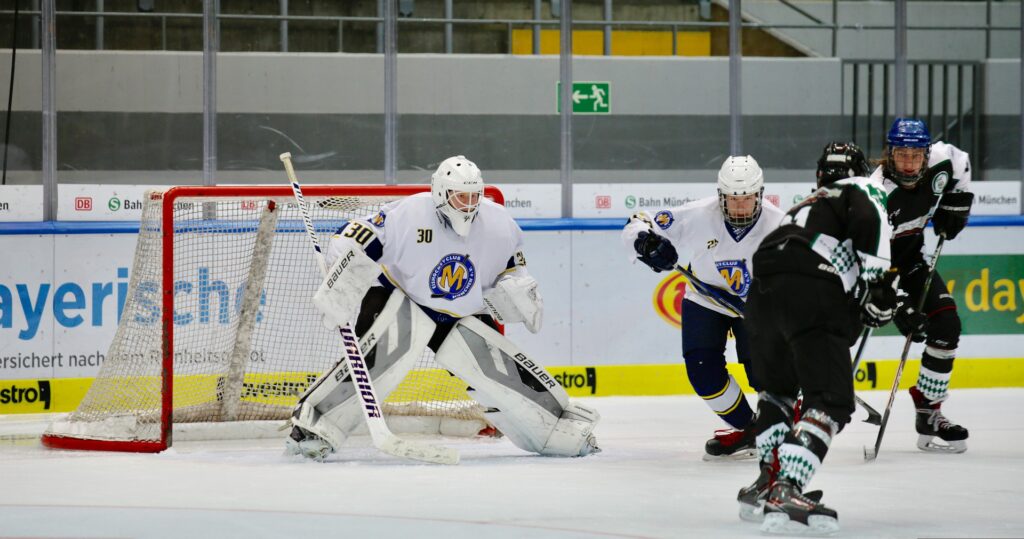
Goaltender Equipment
Goaltenders wear specialized equipment to protect themselves from shots and other physical contact on the ice. This includes a mask, chest protector, leg pads, glove, and blocker. Goaltenders must also wear a specially designed goalie stick to assist them in making saves.
Developing your ice hockey skills takes time, practice, and dedication. But don’t forget about your safety on the ice – head protection is crucial. Check out our guide on how to pick and buy the best hockey helmet to ensure you’re fully protected while honing your skills.
Basic Stance
The basic stance is an essential aspect of goaltending. A goaltender must maintain proper balance and positioning to be able to make saves effectively. The basic stance involves bending at the knees and waist, keeping the stick in front of the body, and positioning the glove and blocker in front of the body to be ready for shots.
Movement in the Crease
Goaltenders must also be able to move effectively in the crease to make saves on shots from different angles. They must be able to move laterally and quickly for reacting to shots. Proper footwork and agility are essential for movement in the crease.
Save Techniques
Goaltenders must be proficient in various save techniques to be able to make saves effectively. The most common save techniques include the butterfly, glove save, blocker save, and pad save. Each technique requires proper positioning and execution to be effective.
Advanced Goaltending
Advanced goaltending involves more complex techniques and strategies. This includes playing the puck, using angles to cut down on the net’s size, and anticipating plays to make saves effectively.
| Goaltending Skill | Definition | Tips | Drills |
|---|---|---|---|
| Positioning | Maintaining proper position in net based on game situation | Read play, be aware of positioning, move efficiently | Positioning, game simulations, goalie-specific drills |
| Skating | Efficient movement on skates to make saves and move around the crease | Use edges, maintain balance and control, be quick and agile | Skating, goalie-specific drills, game simulations |
| Puck Handling | Ability to handle and pass the puck as a goaltender | Communicate with defense, make smart passes, be aware of game situation | Puck handling, game simulations, goalie-specific drills |
| Rebound Control | Ability to control rebounds and limit second chances for opponents | Direct rebounds to safe areas, be aware of position of opponents, communicate with defense | Rebound control, game simulations, goalie-specific drills |
| Save Selection | Knowing which save to use based on shot location and type | Read play, be aware of shooter's tendencies, use proper technique | Save selection, game simulations, goalie-specific drills |
| Angles | Properly positioning body and stick to take away angles from shooters | Be aware of position of puck and shooter, move efficiently to take away angles | Angles, game simulations, goalie-specific drills |
| Butterfly | Proper technique to make saves by dropping down to knees and covering lower part of net | Use proper technique, be quick to recover, maintain balance and control | Butterfly, goalie-specific drills, game simulations |
| Glove Hand | Ability to make saves with glove hand | Proper technique, anticipate shot, be quick and controlled | Glove hand, goalie-specific drills, game simulations |
| Blocker Hand | Ability to make saves with blocker hand | Proper technique, anticipate shot, be quick and controlled | Blocker hand, goalie-specific drills, game simulations |
Fitness and Conditioning
Fitness and conditioning are critical components of ice hockey performance. The role of nutrition in ice hockey is also critical, as it affects player fitness. Players have to be in very good physical condition so the fast-paced and physically demanding nature of the sport can also be endured. Now let’s understand how fitness and conditioning is an important aspect in ice hockey.
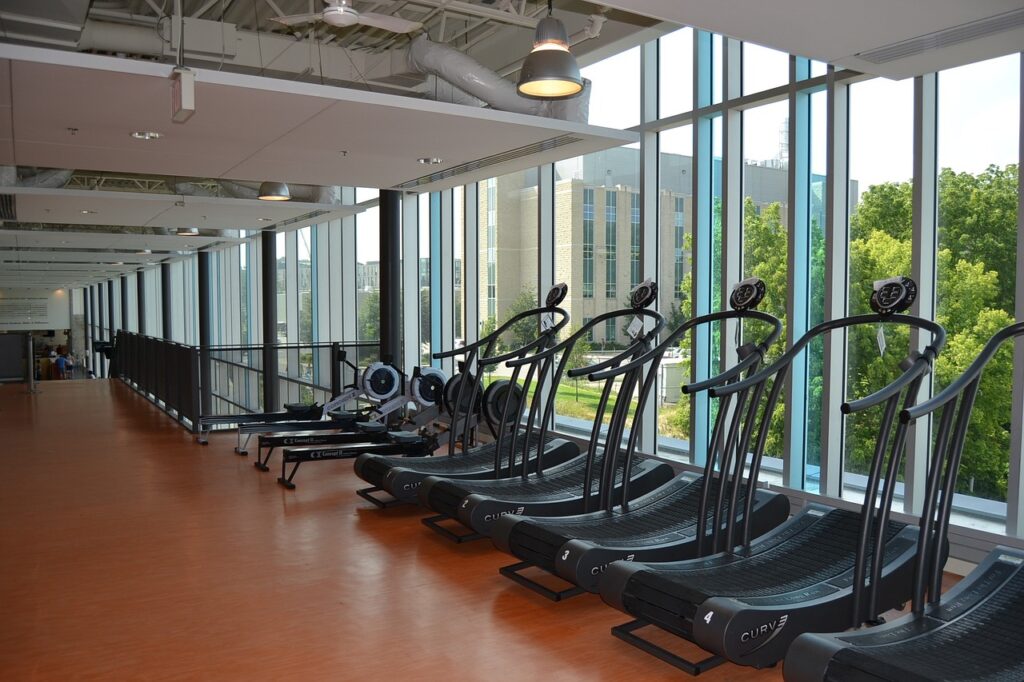
How fitness affects performance?
Fitness is crucial for ice hockey performance. Several aspects of the game are affected by it, including endurance, speed, agility, strength, and recovery. Players in good physical condition can easily maintain a high level performance throughout the game. Besides this, they also recover quickly between shifts. A fit player will undoubtedly have superior ice hockey skills than an unfit player.
Pre-game warm-up
For preparing the body for the intense physical demands of ice hockey, a pre-game warm-up is very crucial.A proper warm-up routine helps in increasing flexibility, reduceing the risk of injury, and improving reaction time.
Off-ice conditioning
It involves exercises and activities that players do outside of practice and games to improve their physical fitness. This includes activities such as weightlifting, cardio exercises, and agility drills. To know more, read my guide on Off-Ice Training for Hockey.
In-season training
It is essential for maintaining physical fitness throughout the season. This can involve incorporating exercises and drills into regular practices to maintain fitness levels and reduce the risk of injury.
Check out below table. This table provides a concise overview of the key skills and their importance in ice hockey
| Fitness and Conditioning Skills | Description | Importance |
|---|---|---|
| Recovery | Techniques for avoiding injury and staying healthy | Essential for avoiding burnout over the season |
| Endurance | Sustained high levels of energy throughout game | Essential for avoiding fatigue |
| Balance | Control over body positioning | Essential for maintaining control |
| Flexibility | Ease of movement in joints and muscles | Essential for preventing injuries |
| Agility | Change direction quickly and move around obstacles | Important for evading defenders |
| Speed | Quickness in skating and movement | Important for gaining an edge over opponents |
| Power | Ability to generate force quickly | Important for shooting and checking |
| Strength | Exert force and resist opponents | Important for winning puck battles and maintaining balance |
Frequently Asked Questions on Ice Hockey Skills
What are mental skills in ice hockey?
Mental skills in ice hockey include focus, resilience, confidence, emotional control, visualization, goal-setting, and mental toughness.
What is the basic skill in ice hockey?
The basic skill in ice hockey is skating. Players should be able to move quickly and efficiently on the ice in order to pass, shoot, and defend.
What makes a fast hockey player?
Several factors contribute to making a fast hockey player. These include strong and explosive leg muscles, good skating technique, agility, balance, coordination, and good anticipation and decision-making skills.
What core skills are important for a hockey player?
Core skills that are important for a hockey player to have include skating, stickhandling, passing, shooting, checking, teamwork, and physical conditioning.
As you develop your ice hockey skills, equipping yourself with the best gear from top brands is crucial for maximizing your performance and safety. Check out our extensive guide on the top hockey brands to make informed choices when selecting the equipment that best supports your progress on the ice.
Summary
So, these were some of the very important Ice hockey skills that one one must conquer for becoming a pro player. For achieving these skills, focus and dedicated practice sessions are very important. By this players can improve their skills and become valuable assets to their teams.
Always remember that if you want to master the ice hockey skills it will take time, patience, and hard work. With dedication and practice, players can improve their skills and become successful on the ice.
Master the Game: Helmets, Tips, Rules, and More!
Unlock the secrets of ice hockey success with our comprehensive resources. Discover the different types of hockey helmets to protect yourself on the ice, gain a competitive edge with valuable tips, understand the rules of the game, and grasp the concept and strategic impact of icing in hockey.
Equip yourself with the knowledge and gear needed to master the game of ice hockey. Select the right helmet for optimal protection, gain a competitive edge with proven tips and tactics, understand the rules, and grasp the strategic importance of icing in hockey. Let us guide you towards success on the ice.
